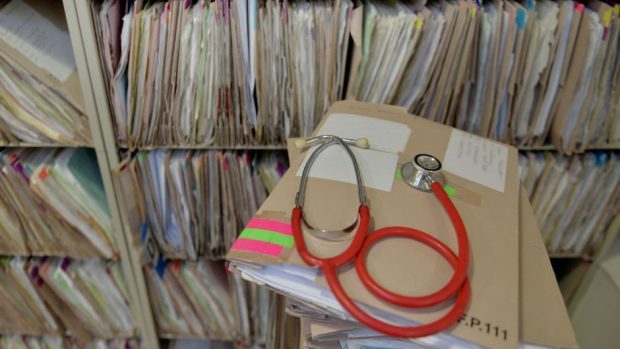This phone call shouldn’t have been tricky. I had a message to call a patient about a blood result that a colleague had taken last week. I read the notes, saw that there was nothing difficult or alarming to discuss and picked up the phone.
His mother answered. She explained that her son was at work and asked me to give the results to her and she’d pass them on.
If only life were that straightforward. When a patient comes to see me, I’m bound, like all health professionals, to maintain their confidentiality. Patients must always know they can speak to me in confidence.
I tried to explain that, without her son’s explicit consent, there was little I could do. This didn’t go down well.
“He’s out at work and can’t take phone calls. Surely you can just give me the information? I’m his mum – he shares everything with me.” And so it went on. She told me she knew what her son had been in to see me about, he lived under her roof, so what was the problem?
I had to repeat, gently, that I couldn’t give her the information because her son had not told me that I could and with that, my conversation with his increasingly disgruntled mother came to an end. I wonder if she thought I got a buzz out of wielding such power?
To do my job, having my patients’ trust is essential. Part of that trust is based on their knowledge that I will not share information about them or their medical condition or treatment, however small the complaint they come in with. So, with regard to the above conversation, although telling my patient’s mother that her son’s tests were normal would have saved that tetchy conversation and a further phone call, my patient would rightly be left wondering “what else did he tell her?”
It is not unusual for a routine consultation about apparently simple symptoms to lead into areas that are troubling and personal to the patient and who am I to judge what a patient deems private, anyway? For the same reason, my staff will never disclose to a third party whether or not someone has even been seen in the surgery.
Patient confidentiality is something we all take seriously. The General Medical Council – the doctors’ regulator – has set down a guidance document on the matter that binds all doctors and runs to 77 pages. They are there to protect the patient and, often, they don’t make it easy for the doctor.
What happens when a patient goes to the press with allegations of poor practice? Doctors have had their faces splashed across the front pages of newspapers under lurid headlines of alleged malpractice and a harrowing story told solely from the patient’s point of view. Invariably, there will be a paragraph at the end saying that the doctor in question had declined to comment. Because we can’t. We have no right of reply.
Sometimes we are told things by patients that can leave us upset or disturbed, with no ability to offload this burden to anyone outside the profession. I can’t, and don’t, discuss individual cases with my wife even – especially when it’s a friend or a member of her family – and that’s sometimes hard to deal with.
It’s always a relief when she finds out from other sources and I no longer have secrets.
With no option to offload to our family or friends, having trusted colleagues is crucial. Whether over coffee or after surgery, everyone should have a chance to access the support needed in order to bear this burden.
Yet there are times when information has to be shared. Obviously, it is shared with those that are directly providing the patient’s care, such as when we refer a patient to hospital. We also share information, at patients’ request, with insurance companies and others who have a legitimate interest in using our records to provide evidence of health matters.
Rarely, we may be directed by the courts to release medical information in the public interest. We may also share information with social services and others if we fear someone is at risk of domestic abuse or serious physical harm. And finally, we are obliged by law to pass on medical details in the public interest if someone is not fit to drive, possess a firearm, has a serious communicable disease or poses a serious risk to others through not being fit to work. In all these cases we will inform the patients of the information we are to disclose unless it is not safe or practical to do so.
How do I square this with being your trusted confidant? My job is always to put my patients first and trust is implicit in that relationship. But the rules are clear and there to safeguard us all. With honesty on both sides I hope we can maintain that trust – no matter what.
Dr Miles Mack is a GP in the Highlands and the former chairman of the Royal College of General Practitioners Scotland

